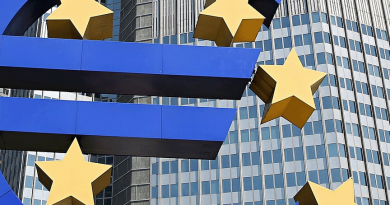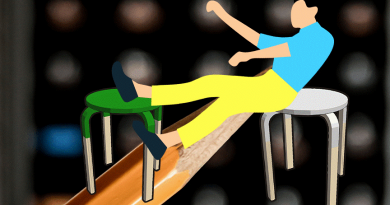The social-liberal direction of nineteenth-century liberalism
Dr PGC (Patrick) van Schie and Dr FD (Fleur) de Beaufort are respectively the director and a scientific staff member at the Prof Mr BM TeldersStichting, the liberal think tank of the Netherlands
“It is in the public interest that the distressing circumstances which cause workers to become proletarians come to an end […] this is not about care for the poor, but about precautions.”
PWA Cort van der Linden
In his book Richting en beleid der liberale partij (1886) Pieter Cort van der Linden made it clear that, to his mind, liberalism was facing major challenges on the threshold of the twentieth century. “Reforming the social condition of workers is the most urgent issue that must be solved in our times. The urge for increased state intervention springs from the awareness that the regulation of social relationships in the life of workers has been overdue for far too long.”1
In the course of the nineteenth century there had been a growing awareness among liberals in various European countries that the restraint of government was no longer the only approach in the best interests of individual freedom. Quite the contrary, individual freedom could definitely profit from positive state intervention.
As that thought gained shape and substance, a new train of thought emerged within liberalism, one that we know these days as social liberalism, also known as new liberalism. What was the historical background against which this school came about, and what was the political theory behind it?2
The Industrial Revolution, the growth of the population and the associated migration to the cities caused increasing problems in nineteenth century Europe. People lived huddled together in small houses without proper sanitary facilities and even the very young and the very old worked long hours in factories in appalling conditions.
There was no security in the event of their becoming too old or otherwise unfit for work, neither was there any provision for the widows who were left to care for young children alone after an industrial accident. In many cases, people fell into poverty through no fault of their own, and many liberals were outraged by this state of affairs.
During the first half of the nineteenth century, the liberal political agenda in most European countries consisted mainly of laying down a number of fundamental individual rights. Other important liberal freedoms – spiritual, political and economic – still had to be fought for at that time. The omnipotence of the state (or the ruler), the church, the community and the holders of economic power such as the aristocracy and guilds had yet to give way to freedom of opinion, freedom of religion, freedom of association, the rule of law and free trade. The struggle for these freedoms and their realisation coincided with what we would today call classical liberalism.
It was in the upper layers of society that people, mainly liberally minded, in the course of the nineteenth century increasingly started to worry about hygiene, education and the cultural development of the population as well as care for the poor; areas that the government had so far barely engaged with, if at all.
Such private initiatives constituted the tentative preliminaries to a more structured state intervention in the lives of the destitute. Philosophers, commentators and politicians in various European countries initiated a debate about the desirability and necessity of actively engaging in ‘social issues’. Ideas were exchanged across borders, since the problems arising in other countries with emerging industrial sectors were often of a similar nature.
A large group of mainly younger liberals agreed that action was needed to cope with the injustices prevalent among factory workers in the cities. There was no consensus, however, about the question of precisely how the issue of poverty should be addressed. There was initially a reliance on private initiatives and employers assuming responsibility for the welfare of their own workforce. Gradually, however, the demand for governments to provide a solution increased.
In the early nineteenth century, there were already some factory owners who took responsibility themselves and set up various facilities for their workers. Such facilities ranged from better housing in the vicinity of the factory – often including some provision for recreation outside working hours – to funds for the care of destitute widows and orphans or for workers who had become incapacitated due to industrial accidents.
This sometimes involved workers being obliged to contribute a small amount from their wages to such funds. Some factory owners were convinced of their social responsibility towards their workers, whereas others viewed such arrangements chiefly as a way of guaranteeing the work ethic of those they employed.
It was, in particular, the first generation of social liberals who found another solution: the setting up of voluntary cooperatives which allowed people to take responsibility for themselves by means of the principle of self-help.
This idea was based upon the bestselling book Self-help, published in 1859 by the Scottish journalist Samuel Smiles. Smiles felt that people should be empowered to engage in self-reliance, even in adverse circumstances. Saving jointly within a cooperative would make this possible in the long run. Social liberals, particularly in Germany, remained convinced of the worth of this cooperative idea for a long time.
Eventually, state intervention did begin to play a more important part in the solution. Social liberals felt that, on the one hand, state intervention addressed what we might call the more familiar liberal agenda, focusing on abolishing the inequalities and privileges that ensued mostly from legislation; for example, the abolition of the prohibition on forming workers associations, which prevented labourers from uniting to fight for better conditions, or the ending of the system which permitted wealthy families to send a substitute (selected by drawing lots) for a son who had been drafted for military service. On the other hand, social liberals wanted state intervention to achieve much more than merely ensuring equality of rights.
Matters such as compulsory education, the prevention of child labour and the protection of women, and later also of adult males, the improvement of living conditions in urban areas and the introduction of social insurance could all be found on the social liberal agenda at the end of the nineteenth century.
This meant an end to the perception that poverty resulted first and foremost from the moral deficiencies of the poor themselves; in other words, the idea that they themselves were mostly to blame. As opposed to an explanation based on moralisation alone, the conviction grew that social and economic causes could also be pinpointed to explain the issue of poverty.
Social legislation can be seen as a manifestation of the insight that society as a whole is responsible for social problems whereby the state – as the representative of society – is also under the obligation to make an effort to solve such problems.
Social liberals considered social legislation to be the first step towards stimulating increased responsibility and development among the poor and destitute. They always remained conscious, however, of the possible negative effects of increased welfare provisions for the poor as well as the risks of (excessive) state intervention verging on interference in people’s lives.
The intention of social liberals was that state intervention by means of social legislation should eventually create a society in which responsible individuals could unite in freedom. It was by no means their intention that the government should appoint itself as the binding element of society by applying an excessive degree of interference.
Because social liberals considered the role of the state to be mainly one of creating and fostering conditions, unlike socialists, they expected much from individuals themselves
In the minds of social liberals, this foundation would always have to be constituted by free and responsible individuals. The social issue had become so urgent during the second half of the nineteenth century, however, that it had begun to pose a threat to the unity of society, including all the risks that damage to that unity would entail; for that reason alone, state intervention was called for.
The switch from minimising or curbing state intervention as much as possible to engaging the government in assisting individuals in the realisation of their freedom was, of course, exceptionally sweeping for liberals. Representatives of the ‘old’ liberal school criticised the ‘modernists’ for altering liberal principles so profoundly.
In Great Britain, the classical liberal thinker Herbert Spencer had already taken aim at the forerunners of social liberalism, the politically active liberals under Prime Minister William Gladstone, who had introduced legislation in which a role was allocated to the government.
Spencer asserted that Gladstone and his associates were making false use of the name ‘liberal’. Genuine liberalism “…diminished the range of governmental authority, and increased the area within which each citizen may act unchecked. […] in past times Liberalism habitually stood for individual freedom versus State-coercion.”
In reality, the ‘so-called Liberalism’ of increasing state intervention was, according to Spencer, “a new form of Toryism” which would ultimately and inevitably end in socialism. And: “All socialism involves slavery. […] That which fundamentally distinguishes the slave is that he labours under coercion to satisfy another’s desires.”3
In the Netherlands, economist Simon Vissering attacked the first generation of social liberals in the 1870s, particularly because they ignored “the constitution of all things, the individuality of man.”
Individuals could only pursue their self-interest: “One may argue about that at length, but the reality is very simple. I ask you […] did we – each and every one of us – not eat our own sandwich just now? […] It is a fact that we all have our individual needs. However, to our mind, this is the organisation of society; in other words, what we do for our own sake should also benefit others.”
Vissering felt that the ideas advocated by the social liberals – also pointedly referred to as ‘lectern socialists’ in the Netherlands – harboured the danger of communism and ‘an arbitrary organisation of society’. And was not one of the core values of liberalism that it had always opposed the supremacy of arbitrariness?4
The social liberals, on the other hand, reproached the ‘old school’ liberals for carrying individualism to extremes. Obviously, the social liberals were also concerned with individuals and their freedom, but individuals can be dissociated neither from their environment nor from society as a whole. Individuals and society should always be considered as mutually coherent.
Ideally, individuals were, to the liberal mind, self-reliant and autonomous people, however, they were not so by nature. They came into this world helpless and totally dependent upon others (their parents). And neither did self-reliance come naturally to them in their youth, as they were becoming adults.
Autonomous individuals have learned to control their animal impulses and to live by insights inspired by reason. An individual could only achieve such a condition after extensive training and with a self-discipline instilled by others.
Here, we can already detect the bond – inextricable from the social liberal mindset – between individuality and social or environmental factors. Individuals owe the skills necessary for making their own and autonomous choices to their environment. Making such choices is also part of an interaction with the world that surrounds the individual.
After all, it is that world which offers the possibility of choice to the individual. The Spanish social-liberal philosopher Ortega y Gasset pointed out that individuals always relate to their environment intellectually.
There is an interaction between the world and myself. My environment shapes my thoughts but I also focus on particular things in my environment. I do not hear and see everything; I hear and see the things that I focus on. Ortega calls this ‘co-existence’. Although my existence was not primarily my choice, it is my choice to give meaning and substance to my life. If I were not to do that I would be a fatalist, but if I do it I exert my freedom.5
Exactly how discriminating should those choices then be? On the one hand, a person with a strongly individual character does not simply go along with the crowd; on the other hand, constantly opposing the crowd is not in itself proof of individuality either.
Social liberals disagreed with the idea of liberal ‘godfather’ John Stuart Mill that a liberal individual should always oppose pressure to conform and should think and act as originally as possible. The liberal lawyer James Fitzjames Stephens remonstrated as follows: ‘Originality consists in thinking for yourself, and not in thinking unlike other people.’6
The interaction between individuals conjures up forces that were initially only latent in the individual. The founder of the ‘new liberal’ sub-school in Great Britain, Thomas Hill Green, expressed this as follows: “Social life is to personality what language is to thought.”7
Individuals cannot develop themselves in total isolation. Society develops gradually as individuals – mutually influenced but all in their own right – work towards their own development. This development is embodied in the traditions of that very society and its institutions.
The traditions and institutions of society, in turn, enhance the possibilities for the individual to develop themselves. And thus individuals and society push one another onwards and upwards.
Social liberals liked to compare this idea with an animal or human organism. In the nineteenth century, it was widely popular to picture society as an ‘organic entity’. Just as the hand or the eye cannot function independently of the human body, individuals could not function independently of one another and of society.
By working effectively, they served both one another and the societal ‘body’ and this body in turn nourished the parts. This was called organic thinking. With this form of thinking, some social liberals attributed to society a spirit and objective of its own, while others were very wary of that approach.
Among the latter was the influential social-liberal sociologist Leonard Trelawny Hobhouse, who wrote: “The true organic theory is that the whole is just what is constituted by the co-operation of the parts, neither more nor less, not more real or less real, not of higher nor of inferior value.”8
Then again, there was a consensus among social liberals that this organic process was, or at least should be, focused on harmony. This thought also encompassed the role of the government, the purpose of which ought to be the stimulation of society proceeding in a harmonious manner.
Such harmony could not come about if the government did not allow adequate scope for autonomous private initiatives. Neither would there be harmony if the government tried to think and act on behalf of individuals and their associations.
The principal duty of the government was to create the conditions which would permit individuals and all their forms of cooperation – associations, cooperatives, businesses etc. – to develop in an optimum manner, and also to ensure mutual support.
In this respect, social liberals distinguished themselves from socialists, who often attributed a major role to the government in society and the economy.
Moreover, far from considering harmony to be the essence of society, socialists felt that the conflict between classes with irreconcilable interests was at its core. Socialists thought that they could solve this conflict by engaging the state in the interest of the class that they felt was being suppressed: the proletariat.
This reflected a one-sidedness that social liberals were careful to avoid. If anything, the government had to encompass all the interests that were discernible within society and further the mutual reconciliation of these interests. Individuals and their associations, as well as society as a whole, stood to gain most from that.
Because social liberals considered the role of the state to be mainly one of creating and fostering conditions, unlike socialists, they expected much from individuals themselves. The state creates a society in which the scope is provided to give individuals equal opportunities to develop their individual talents.
Individuals can then be expected to seize those opportunities and ensure their own self-sufficiency as much as possible. This was not only the expectation of social liberals at the end of the nineteenth century; it remains a train of thought within liberalism today.
Education is key to that thought. After all, it gives individuals the opportunity to discover and develop their talents, even when the stimuli from their direct environment is insufficient. Education enables children to develop into responsible and autonomous citizens who can provide for themselves to the greatest possible extent.
Where classical liberals are particularly intent on creating framework conditions that will empower individual development, social liberals take things one step further. To their mind, it is reasonable to expect of individuals that – to a degree – they make the most of their talents; not because they have received these talents from a higher power (such would be the reasoning of a Christian Democrat) but because those talents constitute the foundation from which individuals can make a useful contribution to the society to which they belong.
Social liberals were therefore in favour of compulsory education right from the start, and they continue to take a critical view of the attempts of parents who seek to appeal for exceptions to compulsory education.
Likewise, social liberals also take a positive stance as regards the attempts being made in many European countries to reduce absences from school and to emphasise the individual’s responsibility to obtain at least a basic level of qualifications.
Compulsory education no longer simply stops at the age of sixteen, but continues until a starter qualification has been obtained. This is the only way in which people will be empowered to be self-sufficient and to make a contribution towards society in their own way.
For anyone who takes social liberalism seriously, obtaining a starter qualification is not just an option, it is an obligation for anyone who has the capacity to do so. It remains up to individuals to choose the direction of their development; the option to do nothing, however, does not chime with the social liberal body of thought. This example illustrates that social liberalism is, in general, more prescriptive than other schools of liberalism.
Endnotes
1. PWA Cort van der Linden, Richting en beleid der liberale partij [transl. Direction and policy of the liberal party], Groningen, 1886.
2. December 2014 saw the publication in Dutch of the book Sociaal-liberalisme by Fleur de Beaufort and Patrick van Schie (Boom Editors, Amsterdam, 2014), which deals with these questions in detail.
3. Herbert Spencer, The Man versus the State (1884), pp. 10, 29 and 55 (incorporated into the edition The Man versus the State. With Six Essays on Government, Society and Freedom, Indianapolis, 1981).
4. Quoted in: Stefan Dudink, Honest liberalism. Social liberalism in the Netherlands 1870-1901 (Amsterdam, 1997) pp. 51-52.
5. José Ortega y Gasset, What is philosophy? (a range of 11 lectures, delivered in 1929; The Hague, 1960) lesson viii, pp. 162-181.
6. Quoted by: David George Ritchie, The Principles of State Interference: Four Essays on the Political Philosophy of Mr. Herbert Spencer, J.S. Mill and TH Green (London, 1891) p. 88.
7. Thomas Hill Green, ‘Prolegomena to Ethics’, pp. 255-257 (as incorporated in Paul Harris & John Morrow eds., Thomas Hill Green: Lectures on the Principles of Political Obligation and Other Writings (Cambridge, 1986)).
8. Leonard Trelawny Hobhouse, The Metaphysical Theory of the State. A Criticism (Honolulu, 2004 [originally 1918]) pp. 129-130.




